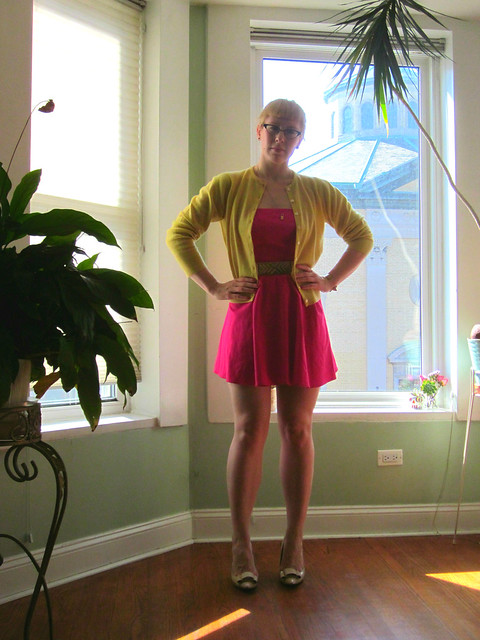Blending the old and the new
I was really tempted, when I first got into vintage, to throw out all of my old clothes and buy a ton of stuff so that I could live in it it full time. Like most people, the initial thrill of getting into something new, something that just seemed so right for me, was intoxicating. There was a period where if it wasn't vintage (or at least suitably retro in appearance), I just didn't want to wear it. The printed pants, mini skirts, t-shirts, and loose sweaters that I was wearing a lot of just looked wrong. I'd created this new vision of myself in my head, and any clothes that didn't express that weren't appealing anymore, even if I'd previously liked it.
Of course, at a certain point practicality has to prevail. If you've only got two dresses, a handful of skirts, and a blouse or two that fit into your new and improved style, you're going to get bored with your wardrobe fast.
Now I'm actually glad that I didn't have the means to purchase a whole new wardrobe. Don't get me wrong - I own, and wear, more vintage every day, but I've remembered what I loved about a lot of the pieces that were already in my wardrobe. What you wear, in a very real way, is a statement about who you are, or who you want to be. I'm the quirky vintage woman, for sure; I'm also still the sporty woman, and the trendy woman, and the cool city woman. That doesn't go away just because I find a new aspect of my style that I want to express.
Tips for transitioning to vintage style:
1. Stay true to your personal aesthetic. I find it really helpful to think about my style in terms of adjectives. I would say that my style is youthful, ultra-feminine, and romantic, but with a tough edge. So long as a piece fits in with those descriptors, it'll probably play fairly well with the other things in my wardrobe, be it modern or vintage.
2. Be practical about your wardrobe needs. I ride my bike to work in warmer weather, and skirts just aren't that practical in that context. I've made it a point to find cute, high-waisted shorts and pants that might not be strictly vintage, but can read vintage given the right context.
3. Know the power of hair and makeup. New clothes can be really expensive. A new hairstyle or some makeup, not so much. When I first started getting into vintage, I was amazed by how much of a difference just curling my hair or wearing red lips and cat eye eyeliner made. They're easy vintage signifiers that can make even jeans and a t-shirt look retro and vixenish.
4. Invest in a few wardrobe workhorses. I realized recently that most days, I'll wear either a cashmere cardigan, a full skirt, or both. Some of them are vintage, some are new or reproduction, but either way they add a little bit of vintage flair to my other pieces. The specifics will vary from person to person, but if you know that, say, peter pan collar blouses or pencil skirts tend to give you just the right look, have a few of them in your wardrobe so that you can pull them out regularly.
5. Accessories are your friend. I've mentioned before how headbands, scarfs, flowers, and other hair accessories can rescue a bad hair day, and they can also help spice up your look if you're feeling a little flat. Likewise, some vintage bangles or a statement necklace can add instant flair and polish to an otherwise ordinary outfits. Belts are great defining a silhouette, and swapping heels for flats can make a fancier dress feel more appropriate for every day wear (and vice versa).

I think this outfit is a pretty good example of what I'm talking about. I've had this full skirted pink mini dress for a few years now. I paired it with a vintage yellow cardigan for some coverage in the cool spring weather. My nude shoes, which you can't see that well, have bows at the toes and a fun, goblet shaped heel. I used a thick belt to define the waist, which is a bit high on me, and I accessorized with a delicate gold necklace and my cat eye glasses. I like the overall effect, which is feminine and a bit retro, if not necessarily vintage.
Of course, at a certain point practicality has to prevail. If you've only got two dresses, a handful of skirts, and a blouse or two that fit into your new and improved style, you're going to get bored with your wardrobe fast.
Now I'm actually glad that I didn't have the means to purchase a whole new wardrobe. Don't get me wrong - I own, and wear, more vintage every day, but I've remembered what I loved about a lot of the pieces that were already in my wardrobe. What you wear, in a very real way, is a statement about who you are, or who you want to be. I'm the quirky vintage woman, for sure; I'm also still the sporty woman, and the trendy woman, and the cool city woman. That doesn't go away just because I find a new aspect of my style that I want to express.
Tips for transitioning to vintage style:
1. Stay true to your personal aesthetic. I find it really helpful to think about my style in terms of adjectives. I would say that my style is youthful, ultra-feminine, and romantic, but with a tough edge. So long as a piece fits in with those descriptors, it'll probably play fairly well with the other things in my wardrobe, be it modern or vintage.
2. Be practical about your wardrobe needs. I ride my bike to work in warmer weather, and skirts just aren't that practical in that context. I've made it a point to find cute, high-waisted shorts and pants that might not be strictly vintage, but can read vintage given the right context.
3. Know the power of hair and makeup. New clothes can be really expensive. A new hairstyle or some makeup, not so much. When I first started getting into vintage, I was amazed by how much of a difference just curling my hair or wearing red lips and cat eye eyeliner made. They're easy vintage signifiers that can make even jeans and a t-shirt look retro and vixenish.
4. Invest in a few wardrobe workhorses. I realized recently that most days, I'll wear either a cashmere cardigan, a full skirt, or both. Some of them are vintage, some are new or reproduction, but either way they add a little bit of vintage flair to my other pieces. The specifics will vary from person to person, but if you know that, say, peter pan collar blouses or pencil skirts tend to give you just the right look, have a few of them in your wardrobe so that you can pull them out regularly.
5. Accessories are your friend. I've mentioned before how headbands, scarfs, flowers, and other hair accessories can rescue a bad hair day, and they can also help spice up your look if you're feeling a little flat. Likewise, some vintage bangles or a statement necklace can add instant flair and polish to an otherwise ordinary outfits. Belts are great defining a silhouette, and swapping heels for flats can make a fancier dress feel more appropriate for every day wear (and vice versa).

I think this outfit is a pretty good example of what I'm talking about. I've had this full skirted pink mini dress for a few years now. I paired it with a vintage yellow cardigan for some coverage in the cool spring weather. My nude shoes, which you can't see that well, have bows at the toes and a fun, goblet shaped heel. I used a thick belt to define the waist, which is a bit high on me, and I accessorized with a delicate gold necklace and my cat eye glasses. I like the overall effect, which is feminine and a bit retro, if not necessarily vintage.
Jessica
